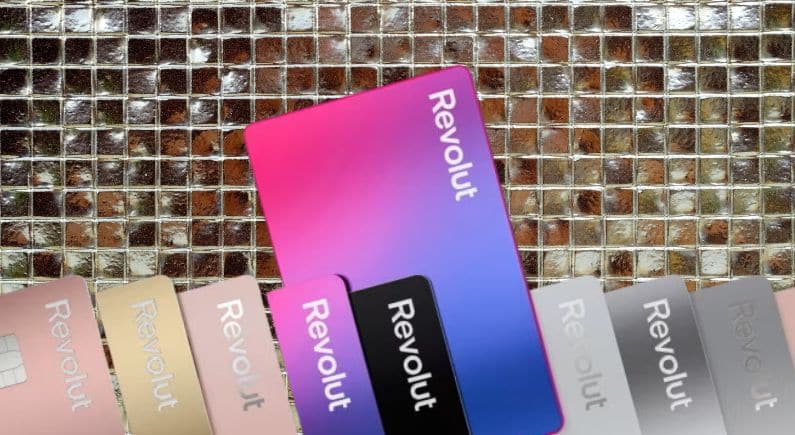Polygon Bridge: What it is & How to Use it

There’s a lot of talk about Polygon and its various technologies, of which there are many. Just to briefly recap, Polygon is a platform and framework for building Ethereum-compatible blockchains.
Polygon aims to bring faster transaction speeds to Ethereum
As well as to eventually build an “internet of blockchains” in which digital assets such as tokens, Dapps, and NFTs, can move freely between different chains brining more freedom to their users.
One of the most important and useful features of Polygon is the Bridge. This lets you move your tokens from Ethereum to Polygon and vice versa. In this guide we’ll take a closer look at the Bridge, what it is, how it works, and how to use it.
What is Polygon Bridge?
So, we know that Polygon is all about cheaper transactions, faster ones too, and trying to connect the various blockchains into one interconnected whole.
This is the internet of blockchains vision, and for that to work assets need to be moved from one network to the other. Polygon is an Ethereum-compatible network, which means it can communicate with the Ethereum mainnet.
Many people and Dapp developers choose to move things from Ethereum to Polygon to take advantage of the faster and cheaper transactions. There needs to be a tool, technology, to allow for that.
And Polygon Bridge is that technology.
With the bridge users can transfer ERC tokens and NFTs between the Polygon and Ethereum networks.
Polygon Bridge comes in two flavors, the Plasma chain and the PoS (proof of stake) chain. Both can bridge assets, but they have different takes on security measures. Notably, the Plasma bridge uses somewhat more stringer security measures which can result in withdrawals back to the Ethereum mainnet taking up to seven days.
For this reason, many choose the Plasma bridge to get their stuff on the Polygon network and then the PoS bridge to get them off.
Bridges are very important because in order for users to be able to interact with Dapps such as Aave, Curve, and SushiSwap, the tokens first need to be transferred to the Polygon network.
Whether it’s the Plasma or PoS chain, the Bridge is a trustless cross-chain transaction channel between Polygon and Ethereum. Users are able to transfer assets to the Polygon sidechain by using smart contracts.
In short, the Polygon Bridge is arguably the most important technological part of the whole system. The Polygon network wouldn’t be all that useful if ERC tokens and NFTs couldn’t move freely between it and Ethereum.
So, when you want to move your stuff to Polygon that is what you will use. And why do that? There are many reasons: perhaps you want to use a Dapp that runs on this network such as QuickSwap. Or maybe you want to transfer some NFTs around, but high gas fees on Ethereum are making that prohibitively expensive.
Many users have gotten wise to the fact Polygon can help them avoid high gas fees and allow them to access a world of Dapps, and even Metaverse and play to earn apps. Apps like Aavegotchi, Neon District, and Terra Virtua Kolect, have been slowly migrating to Polygon because of its advantages.
To interact with them, it may be necessary to bridge some tokens from Ethereum to Polygon.
Whatever your reason, in the next sections of this guide we will go over how it all works and how you can start using it now.
How Does Polygon Bridge Work?
First off, there are actually two bridges that allow for tokens and NFTs to move between Ethereum and Polygon.
They are Plasma and the PoS bridges. But what is a bridge anyway, in a technological sense? It is a set of contracts that help in moving assets from a root chain to the child chain.
Both of them use a dual-consensus architecture to optimize speed and decentralization. Consensus here refers to how blockchains achieve agreement on data values in distributed systems. This is crucial for security and verifiability of digital ownership.
When tokens are bridged over the Polygon Bridge, there will be no change to the token’s circulating supply, which means the token will remain in circulation. Tokens that leave the Ethereum network are locked, and the same number of tokens will be minted on the Polygon network as will be minted on the Ethereum network on a one-to-one basis as the pegged tokens.
As part of the process of connecting the tokens back to Ethereum, the pegged tokens on Polygon will be burnt, and the tokens on Ethereum will become unlocked.
Of course, users can choose which of the two bridges they want to use to move their assets. We’ll get into the specifics of the process later, but in short: the Plasma bridge takes around 3 hours to withdraw using the Plasma exit mechanism and supports ETH, ERC20 and ERC721 tokens. The PoS Bridge can be used for other token standards such as ERC-1155.
If this sounds complicated, it really isn’t. ERC-20 is what most tokens running on Ethereum are. It’s a common standard that describes how they should behave. ERC721 is a standard for non-fungible tokens (NFTs). ERC1155 is a multi-token standard that allows for each token ID to represent a new configurable token type, which may have its own metadata, supply and other attributes.
Once this is done, users can transfer any of their tokens to anyone on the Polygon net, enjoying fast transactions speed and negligible gas fees. The speed of this is almost instantaneous since Polygon is able to validate blocks within one second.
There is one major difference between Plasma and PoS and that’s the speed of withdrawal back to the Ethereum mainnet. On the Plasma bridge this can take up to 7 days due to the Plasma exit mechanism. So, this is why the PoS chain is recommended for sending tokens back to the Ethereum mainnet.
Whichever bridge you choose (depending on your needs and tokens you want to transfer) interactions between Polygon and Ethereum are generally straightforward and relatively fast.
In the next sections of this guide, we’ll give you instructions on how to transfer tokens from Ethereum to Polygon and then back in the other direction.
How To Bridge Tokens from Ethereum to Polygon
Let’s say you have some ETH on Ethereum, or maybe an NFT. And because you’ve heard about the faster and cheaper transactions that are the crown jewel of the Polygon network.
Whatever you want to do on this network, you will have to first transfer your tokens to it. This process is called bridging, and there are two Polygon Bridges, as previously mentioned.
Whichever one you use; the process is not all that complicated. But let’s go through the steps. They will be largely the same no matter if you’re using the PoS or the Plasma Bridge. You can choose which bridge to use yourself, by clicking the “Switch Bridge” button on the bottom of the transfer box.
But, the first step to doing all this is getting your assets into a compatible crypto-wallet. This is what will let you log in to the Polygon Bridge area and access your various tokens.
Currently, Bridge supports Metamask (arguably the most popular Web3 wallet right now) as well as Bitski, Venly, Coinbase Wallet, and the wallets that are compatible with WalletConnect. That gives you a lot of choice.
However, if you don’t already have a wallet, Metamask is the one that most users in the crypto world recommend. Making an account is very easy but make sure to keep your secure passphrase in a secure place, because if you lose it, you will also lose everything in the wallet.
To use Metamask with Polygon, you will have to add the Polygon Mainnet to it.
After this simply navigate the Bridge page, select your supported wallet, and you will be logged in after approving the connection to the Bridge portal.
From here, sending your assets to Polygon is as easy as selecting the Deposit tab.
After this, the Bridge (PoS or Plasma) will have access to what is inside your wallet. Select the token you wish to transfer from the list. You will also be able to see the available balance.
Now it’s just a matter of inputting the amount you wish to bridge over to Polygon and clicking the transfer button. Make sure you have chosen the bridge, PoS or Plasma, that you wish. Note that the portal will automatically choose the appropriate one based on token type so if you don’t want to get into the nitty gritty of this, you can just leave it as is.
Once everything is ready, click the Transfer button. Note that like all transactions, these transfers also have gas fees so make sure that you’re fine with the cost before you approve the transactions. Like all blockchain operations, bridge transactions to and from Polygon are not reversible. Once it’s done, it’s done.
Before it is done, however, you will be prompted to sign the transaction via your wallet. The gas fees will be quoted here and you’ll see a progress bar telling you how long the transfer will take. Typically, you can expect the assets to be moved over in 7 or 8 minutes but depending on network congestion, this can take longer. A little bit of patience goes a long way in the crypto world.
Once your tokens are on Polygon, you can do whatever you want to do with them. Interact with all the Dapps, play your favorite P2E games that run on this network. Swap one token for another using DEX Dapps like QuickSwap…
You can also purchase and sell NFTs on OpenSea that are listed on the Polygon network.
How To Bridge Tokens from Polygon to Ethereum?
Well, you’ve done what you wanted to do on the Polygon network and now you want to bring all your stuff back to Ethereum.
There are many reasons why you might like to do this. Transferring your NFTs or cryptocurrency so you can sell them on Ethereum, sending tokens to exchanges that only support Ethereum and not Polygon…
Whatever your reason, using the Polygon Bridge to transfer assets from Polygon to Ethereum is as easy as doing it the other way.
Most of the steps are the same. You will need your supported online wallet; you will log into the Bridge portal with it.
But this time we will be clicking the Withdraw tab in the interface. For withdrawal it is suggested that you use the PoS Bridge and that is likely the one that will be automatically selected. If not for some reason, click the “switch bridge” button. Of course, the Plasma bridge can withdraw too, but due to how it works you may need to wait up to 7 days for your stuff to migrate over.
So, choose the token you want to transfer, enter the desired amount, click the Transfer button. Some important notices will pop up, make sure to read them. Again, like when we were transferring to Polygon, your wallet will need to sign the transaction and this is where you will see the gas fees.
Don’t be surprised if the gas fees are quite high. This is the reality of Ethereum right now that many hope Ethereum 2.0 might change in the future.
If everything looks okay, approve the transaction from your wallet interface and wait for it to arrive. You can use Etherscan to check its status.
If you are using the PoS chain, Polygon’s validators will need to validate the transaction and this can take up to 3 hours. This process is automatic and requires no input from you.
Once the validation is done, you need to claim the tokens to your wallet. Click the continue button and you will see your tokens when the withdrawal is complete.
If you want to transfer MATIC, Polygon’s utility token, from Polygon to Ethereum, then you will need to use the Plasma bridge. When you select MATIC from the interface, the Plasma bridge will be selected automatically.
From here, the steps are the same as described above. Click the transfer button, confirm it in your wallet, make sure that you’re okay with the gas fee, and then you’ll be waiting for a while.
Now, unlike on the PoS Bridge, here there will be three transactions you need to confirm for the whole process to be finally done. The first one you initiate is the transfer which can take up to 3 hours to be validated.
Then the checkpoint will arrive meaning that the transaction is validated on the Ethereum blockchain. You need now to confirm the second transaction to start the challenge period. This is a security feature.
After this is done, at long last, you will click “Continue” to send the MATIC tokens to your Metamask (or another compatible wallet).
This process is a bit involved, and it is mostly done when people want to stake MATIC or become validators. This can only be done on the Ethereum Mainnet. Be sure not to transfer anything you want to use for staking into Polygon since no staking occurs on the Polygon network.






